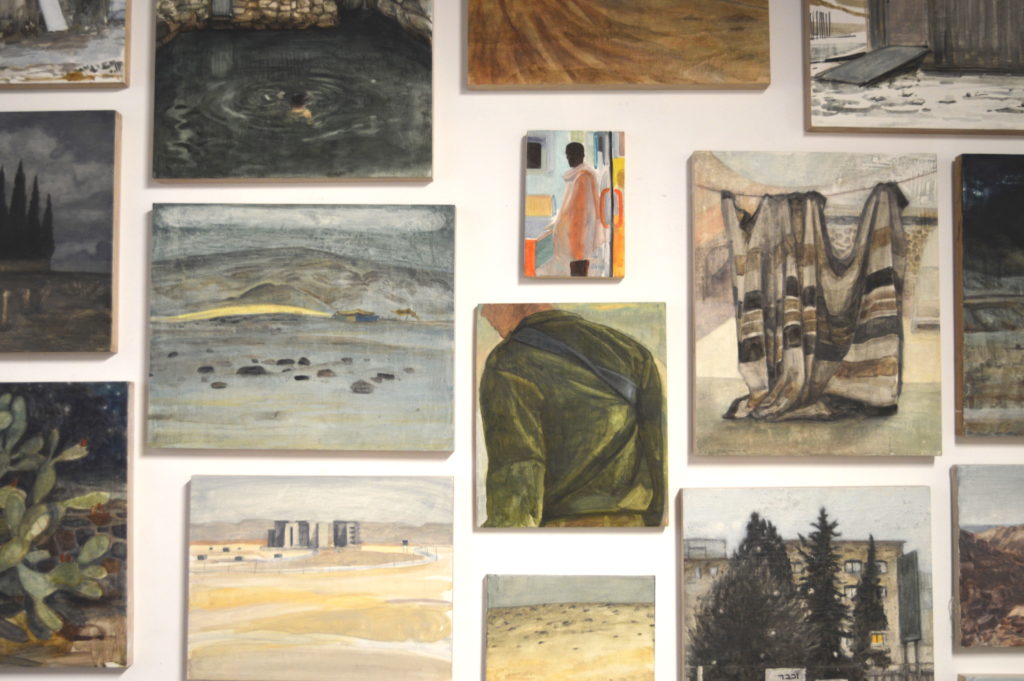In this series made in 2018, I tried to describe through painting the constructions observed in the Negev and Judea deserts. I know these landscapes well, I go there often. During the two years of my national service, I was an excursion guide. As a soldier-guide – an unusual combination – I was part of the National Authority of Nature Reserves; I could thus access the photographic archives of these landscapes. I later documented these deserts myself.
Last summer, I stayed for a month in the city of Arad. To call Arad a “city” is somewhat presumptuous – it is more of isolated village, sitting very isolated in the depths of Judea, just north of the Negev. During this time spent in Arad, I walked a lot and I contemplated the surprising variety of the neighborhood. To escape the stifling heat of August, I spent my afternoons indoors, noticing how nature penetrates the houses – with lizards, ants, wasps, tiny insects, scorpions, snakes and – of course – sand. Back in Paris, this desert obsessed me and attracted me. It permeated my painting. I found an almost anthropological interest in watching and showing these landscapes, because they contain a lot of complexities, human and aesthetic contradictions. I try, for example, to present the heavy contrasts between the emptiness, strength and age of this desert, and the constructions that “sprinkle” it and that seem to be so random and ephemeral. Another paradox strikes me: Bedouins’ way of building, compared to that of the Jews. Bedouins, like incarnations of the desert, do not care about the “current government”. They have already seen so many local powers come from the Ottoman Empire … and even before. Their constructions “have nothing to prove”.
The more I come back to this desert, the more the constructions of its landscape evolve: displacements and extensions of Bedouin villages, the evolution of the city of Beer-Sheva and that of Yeruham, large unidentifiable abandoned objects, waste left on site after military training, paths and roads that multiply, some borders clearly invisible and others very present – including the the new physical border between Israel and Egypt, shabbily constructed in 2012 – an act that I can never forgive, if he hears me.
Thanks to my reading of Georges Perec and my passion for documentary photography, I understood that with a simple description of places, it is possible to learn a lot. Through the almost documentary narrative of landscapes and constructions, we discover clues about the inhabitants, their ethnic differences and their stories. Since my observations and research are conducted through painting, it seems right to try to show what I see with my eyes, rather than through what I heard from the locals.
There is, however, a major lesson I draw from the discussions I had there: no one fears silence. Conversations contain long moments of suspended time, and to animate emptiness is not necessary. I did not get used to it. I have a habit of filling all the gaps. To make this series of paintings, I settled here and there to paint from nature or I brought photographs to the studio to work from afterwards. The place I take, my position as a spectator, is always behind; I prefer to sit on a rock, or to photograph from my car, because it’s my true place, the most honest place I have.
A text by Nathanaëlle Herbelin, 2018
